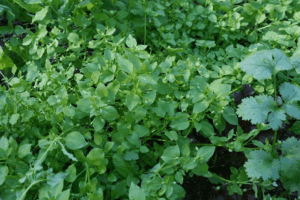Drastic times call for drastic measures. If you ever find yourself stranded in the wilderness without food, you’ll have to figure out how to feed yourself. Many plants in the wild are edible, but many are also poisonous.
If you have taken a “sensible” survival class, you know that plants are NOT your first choice for survival food. The fact that so many types of plants can be poisonous and that they provide little in the way of calories (some survival shows will show the host running around for more than an hour to collect a plate of plant material. A careful analysis of a Survivorman episode, showed that he took almost an hour and spent 350 calories, to provide a meal of 185 calories).
Insects (all six leggers are considered edible) and worms provide far more calories and don’t possess the likelihood of sickness or death.
Putting aside sensible survival, there are times when eating plant material might make sense. For instance, plants are full of carbohydrates – which is what you want when you don’t have a lot of water around. Proteins and Fats take more water to process, so there is that. Also, you may have an acre of a certain plant available, but you are uncertain if you should eat it.
This is a situation for the “Universal Edibility Test” (sometimes called Field Edibility Test). This mini-course is all about that test and how to apply it.
